Top 5 most incredible drones
Welcome to our readers on the iCover Blog Pages ! As you know, the goals that the creators of the first drones set before their creations could hardly be called peaceful. But, originally conceived as a weapon of war, UAVs quickly attracted their capabilities and companies focused on the purely peaceful needs of the civilian market. And, of course, they attracted the attention of a whole army of enthusiasts - amateurs and professionals, realizing their, sometimes very unexpected ideas and concepts in UAVs. On the top five drones, which, in our opinion, could well qualify for the name of the most unusual robotic manned gadgets, we will dwell below.
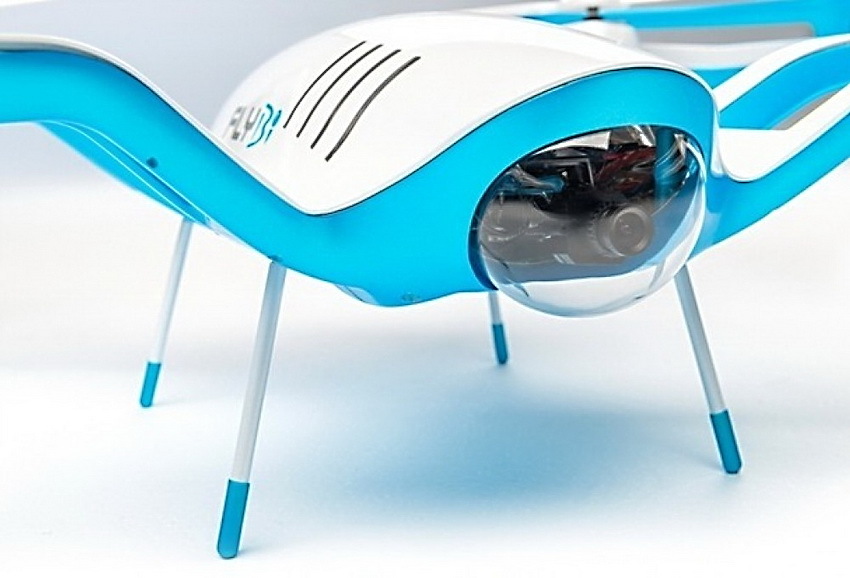
We are all used to the fact that a drone is something hovering or flying in the visible space above our heads. A look at the drone from a slightly different point of view was suggested by a group of engineers from Radger University (USA). Their drone, named Naviator, is not just floating in the air, but, according to the developers, able to mimic a real amphibian and perform underwater raids in accordance with the tasks. I must say that such tasks can actually be quite a lot, for example, transmitting an operational video summary when inspecting the underwater base of the bridge, studying underwater pollution, performing search and rescue operations, underwater reconnaissance, and in many other cases.

The possibility of immersion in water is inherent in the design initially, but a number of problems in this regard, engineers still have to solve. In particular, as you pay attention to the video below, under water Naviator has not yet learned how to do without wires and the circuitry for exchanging the radio signal of the drone and the operator in this case has not yet been finalized. Engineers see one of the possible alternative solutions to the control problem in the possibility of preliminary programming the device to solve the tasks before diving. Among the priority tasks that have yet to be solved are improving maneuverability, increasing payload and threshold depth of immersion.
Why not enjoy kraevidami or some juicy details from the height of the drone’s flight with your own eyes? - Once upon a time, American inventors from Advance Robotix wondered. Over time, the idea became flesh and the FLYBi quadrocopter appeared, which was delivered to users complete with virtual reality glasses. Now, in order to never part with your favorite drone, it will be enough just to put on magic glasses and soar into the air, like a bird, watching the broadcast in real time. The sensations of the reality of what is happening are enhanced due to the high resolution of the camera (1080p) and the ability to control the camera by turning the head. FLYBi itself weighs only a kilogram and is able to hang and fly into the air “in tandem” with the user for 25 minutes, while actually being at a distance of up to 2 km from the operator.
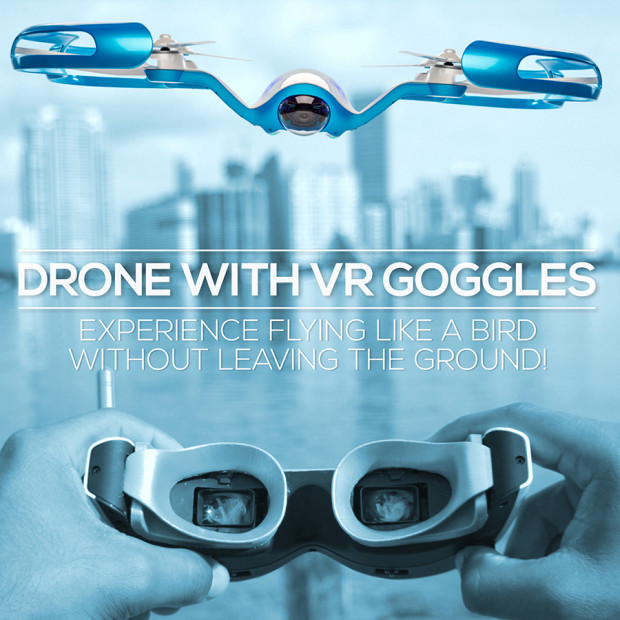
In order to minimize the very fact of a collision with air barriers, the drone is equipped with special ultrasonic sensors. As alternative methods of UAV control, special authoring applications for a smartphone (tablet) or a compact control panel worn on the wrist are offered. The guys thoroughly worked on simplifying the control system, which makes it possible to launch and pilot the device even for those who are as far from technology as possible. One of the highlights of FLYBi is a unique system of automatic battery replacement right in flight mode, which, of course, expands the possibilities for observation and research.
The project was presented on the Indiegogo platformand managed to collect the amount three times higher than the starting bar set by the inventors. $ 399 VR FLYBi Goggles are offered in the kit, but are not required to purchase. The cost of FLYBi junior, middle and senior top-end equipment (drone + glasses + remote control + case) without delivery, respectively, $ 579, $ 859 and $ 979. The start of sales is scheduled for June 2016.
Fleye is a drone that was designed with explicit concern for user safety. Unlike the vast majority of unmanned flying quadrocopters, this UAV has blades hidden inside the hull. The weight of Fleye is only 450 g, and the diameter is 23 cm. The package includes: gyroscope, magnetometer, accelerometer, optical flow sensor and GPS.

Fleye has 10 minutes of available piloting time and a top speed of 15 km / h. Shooting is carried out with a resolution of 1080p. The circuit runs on an ARM Cortex-A9 processor and 512 MB of RAM and is supported by Linux.
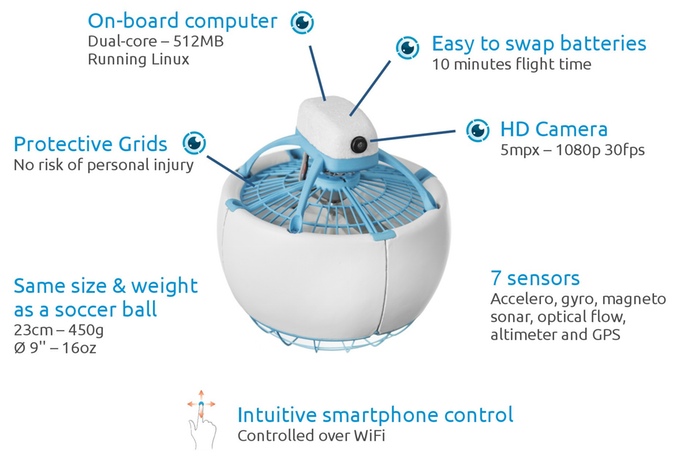
Fleye is represented on the Kikstarter platform and, judging by the pace with which the project is moving towards its intended goal (€ 175,000), there is every chance of becoming successful.

Here, the imagination of the developers clearly decided not to be limited to a simple improvement and uniqueization of the drone. Swiss engineers from the Higher Technical School in Zurich have proposed combining the capabilities of two robotic devices at once - a quadron leg and a quadrocopter. The leading role in the sweet couple belongs to the quadrocopter, which, controlled by the operator, moves the quadroder named StarlETH in the right direction, at the right distance, along the right route. After transmitting the operational report to the quadrocopter, the quadrocopter lands on a flat "croup" - the landing site of the quadrocopter, then the process is repeated as necessary in real time.
We draw your attention to the fact that the quadron leg is not the brainchild of the famous American team Boston Dynamics, but 95% is a real “Swiss” with its own pedigree. Its capabilities include overcoming obstacles in the form of slopes, moving in three modes - “walking step”, “jogging”, “running with acceleration”. An interesting feature of the quadronog mechanism is the ability of its legs to imitate the work of muscles, sequentially accumulating and releasing energy of movement. The process of moving the robot is provided by unique electric motors, also developed by Swiss inventors.
The length of the robops, from the tip of the nose to the tip of the tail - 60 cm, weight - 23 kg. At the same time, StarlETH copes with carrying 25 kg! Despite all the external comic nature of such a pair, the development, in the opinion of its authors, can perform very responsible practical tasks. For example, in the future it can be search and rescue operations. In this case, to optimize a complex route, the functions of a quadrocopter, as a guide for a quadrocopter, overcoming a section of rough terrain, may be indispensable.
If both devices themselves demonstrate quite operational characteristics, then many hours of refinement will still be required to ensure coordinated work in tandem of these two robotic characters.
The last in the line of the most incredible drones, we decided to mention the already successful. Despite its miniature size, the tiny Nixie apparently has a stellar career. Introduced in 2014 at the Make It Wearable contest organized by Intel Nixie Corporation (based on Intel Edition), he managed to win the first prize, measured in a round figure of $ 500,000. The main task that was set for the developers was to demonstrate mini-drones, which in the future could not only successfully compete, but also give odds to existing UAV models.
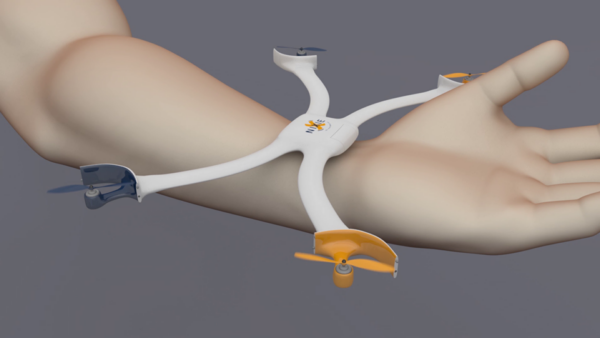
From the point of view of a simple layman, a drone is most often a device that should help capture some special shot in nature or in hard-to-reach places. But what if you yourself want to be in this frame, and not take panoramic and landscape photos? Just in such cases, Nixie can come to the rescue. When you turn on the “setting your camera free” mode, the drone starts not only to soar in the air, but also to move after you, holding what is happening in the frame. This opens up truly limitless opportunities not only for outdoor enthusiasts, but also for professionals involved in mountaineering and other extreme sports.
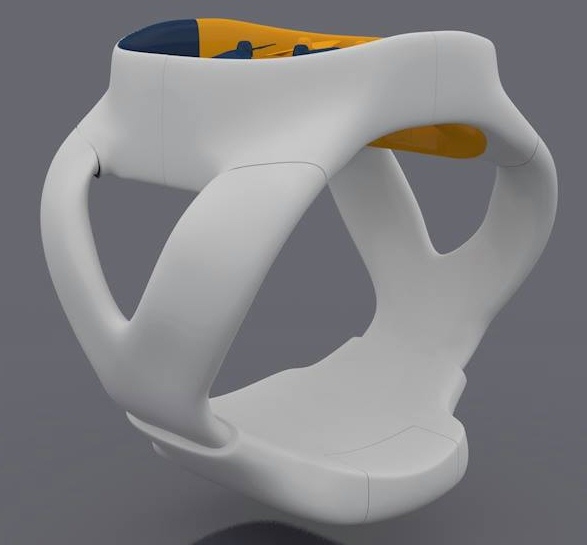
The weight of Nixie does not reach 200 grams, which, in the light of today's domestic realitiesin the near future it may turn out to be an additional advantage, and if you deploy the copter, it can easily fit on a regular sheet. Of course, given the fact that the developers suggested wearing a mini-drone not in a backpack or a special bag, but on the arm, even such a weight may seem quite impressive. But in compensation for the inconvenience caused, the authors really offered the opportunity to use the drone for an “ideal” selfie in the most difficult conditions.
Perhaps you have your own options for no less incredible drones? Share, it will be interesting! )
Dear readers, we are always happy to meet and wait for you on the pages of our blog. We are ready to continue to share with you the latest news, review articles and other publications and will try to do our best to make the time spent with us useful for you. And, of course, do not forget to subscribe to our columns . Our other articles and events


Drone air-water
We are all used to the fact that a drone is something hovering or flying in the visible space above our heads. A look at the drone from a slightly different point of view was suggested by a group of engineers from Radger University (USA). Their drone, named Naviator, is not just floating in the air, but, according to the developers, able to mimic a real amphibian and perform underwater raids in accordance with the tasks. I must say that such tasks can actually be quite a lot, for example, transmitting an operational video summary when inspecting the underwater base of the bridge, studying underwater pollution, performing search and rescue operations, underwater reconnaissance, and in many other cases.

The possibility of immersion in water is inherent in the design initially, but a number of problems in this regard, engineers still have to solve. In particular, as you pay attention to the video below, under water Naviator has not yet learned how to do without wires and the circuitry for exchanging the radio signal of the drone and the operator in this case has not yet been finalized. Engineers see one of the possible alternative solutions to the control problem in the possibility of preliminary programming the device to solve the tasks before diving. Among the priority tasks that have yet to be solved are improving maneuverability, increasing payload and threshold depth of immersion.
Travel with UAVs with virtual reality glasses
Why not enjoy kraevidami or some juicy details from the height of the drone’s flight with your own eyes? - Once upon a time, American inventors from Advance Robotix wondered. Over time, the idea became flesh and the FLYBi quadrocopter appeared, which was delivered to users complete with virtual reality glasses. Now, in order to never part with your favorite drone, it will be enough just to put on magic glasses and soar into the air, like a bird, watching the broadcast in real time. The sensations of the reality of what is happening are enhanced due to the high resolution of the camera (1080p) and the ability to control the camera by turning the head. FLYBi itself weighs only a kilogram and is able to hang and fly into the air “in tandem” with the user for 25 minutes, while actually being at a distance of up to 2 km from the operator.

In order to minimize the very fact of a collision with air barriers, the drone is equipped with special ultrasonic sensors. As alternative methods of UAV control, special authoring applications for a smartphone (tablet) or a compact control panel worn on the wrist are offered. The guys thoroughly worked on simplifying the control system, which makes it possible to launch and pilot the device even for those who are as far from technology as possible. One of the highlights of FLYBi is a unique system of automatic battery replacement right in flight mode, which, of course, expands the possibilities for observation and research.
The project was presented on the Indiegogo platformand managed to collect the amount three times higher than the starting bar set by the inventors. $ 399 VR FLYBi Goggles are offered in the kit, but are not required to purchase. The cost of FLYBi junior, middle and senior top-end equipment (drone + glasses + remote control + case) without delivery, respectively, $ 579, $ 859 and $ 979. The start of sales is scheduled for June 2016.
Absolutely Safe Drone
Fleye is a drone that was designed with explicit concern for user safety. Unlike the vast majority of unmanned flying quadrocopters, this UAV has blades hidden inside the hull. The weight of Fleye is only 450 g, and the diameter is 23 cm. The package includes: gyroscope, magnetometer, accelerometer, optical flow sensor and GPS.

Fleye has 10 minutes of available piloting time and a top speed of 15 km / h. Shooting is carried out with a resolution of 1080p. The circuit runs on an ARM Cortex-A9 processor and 512 MB of RAM and is supported by Linux.

Fleye is represented on the Kikstarter platform and, judging by the pace with which the project is moving towards its intended goal (€ 175,000), there is every chance of becoming successful.

Quadrocopter + quadrod = benefit + “quadrangulation”
Here, the imagination of the developers clearly decided not to be limited to a simple improvement and uniqueization of the drone. Swiss engineers from the Higher Technical School in Zurich have proposed combining the capabilities of two robotic devices at once - a quadron leg and a quadrocopter. The leading role in the sweet couple belongs to the quadrocopter, which, controlled by the operator, moves the quadroder named StarlETH in the right direction, at the right distance, along the right route. After transmitting the operational report to the quadrocopter, the quadrocopter lands on a flat "croup" - the landing site of the quadrocopter, then the process is repeated as necessary in real time.
We draw your attention to the fact that the quadron leg is not the brainchild of the famous American team Boston Dynamics, but 95% is a real “Swiss” with its own pedigree. Its capabilities include overcoming obstacles in the form of slopes, moving in three modes - “walking step”, “jogging”, “running with acceleration”. An interesting feature of the quadronog mechanism is the ability of its legs to imitate the work of muscles, sequentially accumulating and releasing energy of movement. The process of moving the robot is provided by unique electric motors, also developed by Swiss inventors.
The length of the robops, from the tip of the nose to the tip of the tail - 60 cm, weight - 23 kg. At the same time, StarlETH copes with carrying 25 kg! Despite all the external comic nature of such a pair, the development, in the opinion of its authors, can perform very responsible practical tasks. For example, in the future it can be search and rescue operations. In this case, to optimize a complex route, the functions of a quadrocopter, as a guide for a quadrocopter, overcoming a section of rough terrain, may be indispensable.
If both devices themselves demonstrate quite operational characteristics, then many hours of refinement will still be required to ensure coordinated work in tandem of these two robotic characters.
UAV-bracelet - your personal selfie photographer
The last in the line of the most incredible drones, we decided to mention the already successful. Despite its miniature size, the tiny Nixie apparently has a stellar career. Introduced in 2014 at the Make It Wearable contest organized by Intel Nixie Corporation (based on Intel Edition), he managed to win the first prize, measured in a round figure of $ 500,000. The main task that was set for the developers was to demonstrate mini-drones, which in the future could not only successfully compete, but also give odds to existing UAV models.

From the point of view of a simple layman, a drone is most often a device that should help capture some special shot in nature or in hard-to-reach places. But what if you yourself want to be in this frame, and not take panoramic and landscape photos? Just in such cases, Nixie can come to the rescue. When you turn on the “setting your camera free” mode, the drone starts not only to soar in the air, but also to move after you, holding what is happening in the frame. This opens up truly limitless opportunities not only for outdoor enthusiasts, but also for professionals involved in mountaineering and other extreme sports.

The weight of Nixie does not reach 200 grams, which, in the light of today's domestic realitiesin the near future it may turn out to be an additional advantage, and if you deploy the copter, it can easily fit on a regular sheet. Of course, given the fact that the developers suggested wearing a mini-drone not in a backpack or a special bag, but on the arm, even such a weight may seem quite impressive. But in compensation for the inconvenience caused, the authors really offered the opportunity to use the drone for an “ideal” selfie in the most difficult conditions.
Perhaps you have your own options for no less incredible drones? Share, it will be interesting! )
Dear readers, we are always happy to meet and wait for you on the pages of our blog. We are ready to continue to share with you the latest news, review articles and other publications and will try to do our best to make the time spent with us useful for you. And, of course, do not forget to subscribe to our columns . Our other articles and events

- A selection of New Year's gifts up to 2016 rubles from iCover
- Buy an iMac or Macbook to Win a Headset
- Cowon Plenue M Portable Audio Player Review: The Case in Sound
- Gaming peripherals Cougar. Press "X" to win
- Smart cleaning with iRobot + gifts
- Exclusive Records from iCover and Warner Music
- 20% discount on futurism and classics
